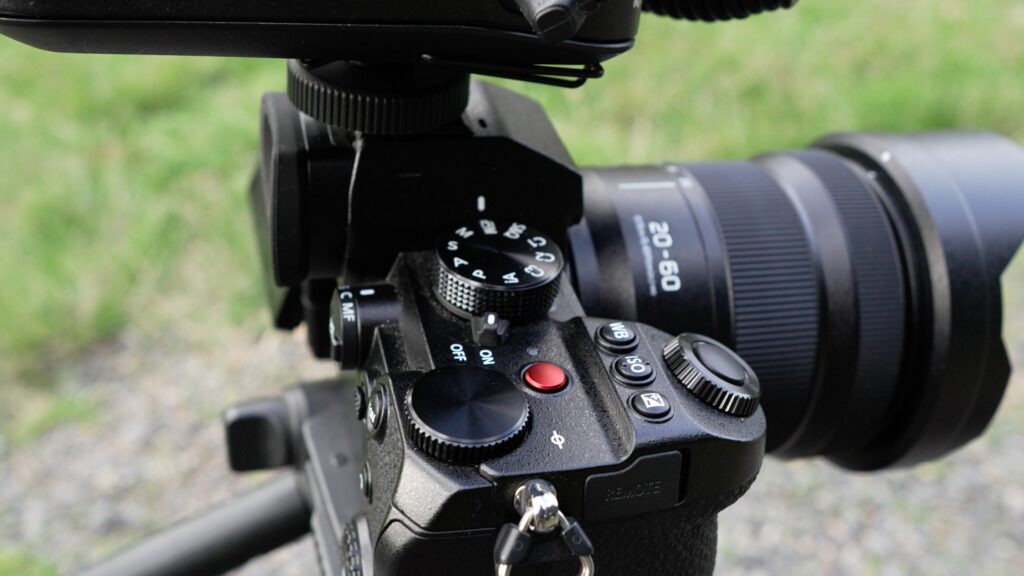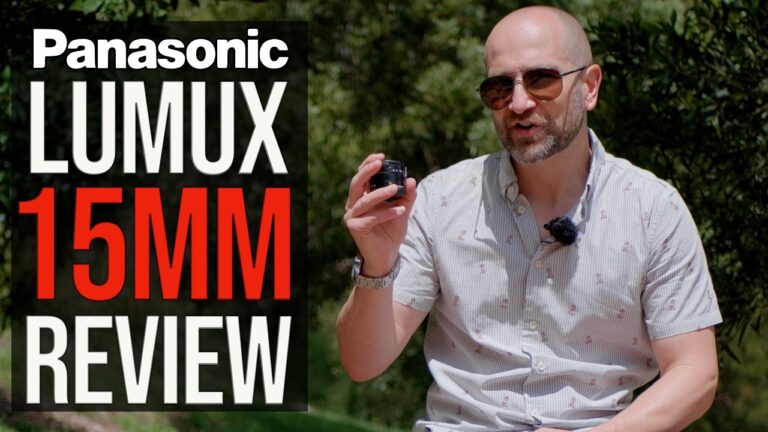Panasonic LUMIX S5 Camera – Still Worth it in 2023?
Panasonic LUMIX S5 Camera – Still Worth it in 2023?
The Panasonic Lumix S5, a full-frame mirrorless camera launched by Panasonic in 2020, boasts a 24.2-megapixel sensor, 5-axis in-body image stabilization, and the ability to capture 4K video up to 60fps. This article will delve into the Lumix S5 and evaluate its performance in various shooting scenarios.
As a proud owner of four LUMIX S5 cameras, I have no plans to part ways with them, even after testing the LUMIX S5II and S5IIX. I will explain why the LUMIX S5 is still a great camera and reveal how to achieve impressive results despite lacking the latest Phase Hybrid Autofocus technology.
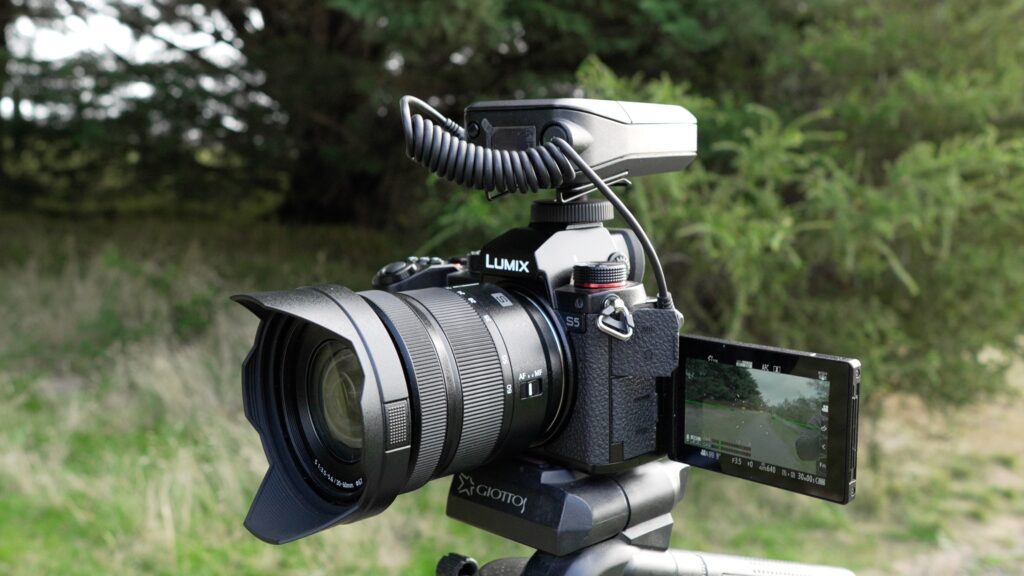
Should you buy an original S5 or a new S5II?
The quick answer is that if you need the best Autofocus and 6K open gate internal recording, get the Panasonic LUMIX S5II. For everyone else, the LUMIX S5 will do the job.
The Panasonic S5 is a powerhouse boasting excellent video and photographic performance, handling, and features. For those who use vintage or manual focus lenses, the original S5 is a great choice.
Not only will the S5 save you money over the S5II, but the result will also be identical. Let’s get into this S5 long-term review in 2023 with that out of the way.
Design and Handling
The Panasonic Lumix S5 boasts a compact and lightweight design, weighing approximately 714g (including the battery and memory card). Its comfortable grip is ideal for extended shooting sessions, and its button layout is intuitive and user-friendly.
This camera boasts a fully articulating 3-inch LCD screen and a high-resolution OLED viewfinder that offers a vivid and detailed view of the scene. It is also equipped with two SD card slots that enable users to capture a significant amount of photos and videos without swapping out cards frequently.
Image Quality
The Lumix S5 features a 24.2-megapixel sensor with excellent image quality, a wide dynamic range, and accurate colors. In addition, the camera’s ISO range of 100-51,200 (expandable to 50-204,800) allows users to shoot in various lighting conditions, with minimal noise in low-light situations.
The camera’s 5-axis in-body image stabilization is impressive, allowing users to capture sharp and stable images at slower shutter speeds and when shooting handheld. The camera also includes a High-Resolution mode that captures and combines multiple images to produce a high-resolution photo with increased detail and clarity.
Thanks to the dual-native ISO of 640 and 4000, the low-light performance is excellent on the LUMIX S5.

LUMIX S5 Color Science vs LUMIX S5II
One of the best things about the LUMIX S5 is its color science. This is one of the easiest cameras I have used to get great results, irrespective of your picture profile. The Natural, Standard, Cine-D, Flat, and V-LOG are some of my favorite profiles on the camera. Learn more about the Panasonic LUMIX S5 Picture profiles on my website.
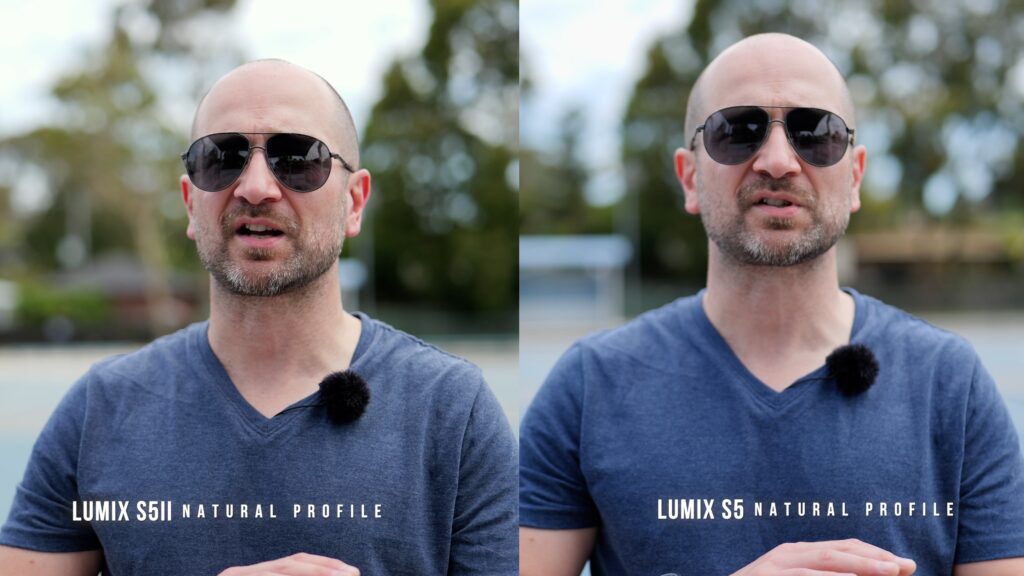
Is the Panasonic LUMIX S5 worth it in 2023?
Check out my full re-review video below of the legendary LUMIX S5.
LUMIX S5 Best Price – B&H – – Amazon De – Amazon Au – Amazon Uk – Amazon Ca
Depth from Defocus Autofocus System (DFD)
The Lumix S5 features an autofocus system called Depth From Defocus. The camera’s AF system is fast and accurate for photography but unreliable for video. With the kit lens, the autofocus is decent but not perfect. If you want the best in Autofocus for video, the S5II or X will be the best choice. The S5 does not have a phase detection system, but the S5II and S5IIX do.
The camera also includes several autofocus modes, including Face/Eye Detection AF, which accurately identifies and tracks faces and eyes in both stills and video. The camera’s AF system can also be customized to suit different shooting scenarios, with various settings and options available. Once you learn how the Autofocus works, you can definitely use it. See my video below for the best Autofocus settings for the original LUMIX S5.
Video Performance
The Lumix S5 is an excellent camera for video, with the ability to shoot 4K video up to 60fps and Full HD video up to 180fps. In addition, the camera includes several video-specific features, including V-Log and V-Gamut profiles, which provide a wide dynamic range and color gamut for maximum flexibility in post-production.
The camera also includes several advanced video features, including Timecode, Waveform Monitor, and Vector Scope displays, which allow users to monitor and adjust their video settings in real time. The camera’s 5-axis in-body image stabilization is also particularly useful when shooting handheld video, providing smooth and stable footage even when moving.

Pansonic LUMIX S5 Recording Limits
The LUMIX S5 has a few recording limitations that you need to know about. Recording in all HD or 4K modes in 8-bit is unlimited. The only restriction on the S5 is 4K in 10-bit where we get a 30-minute limit. 10-bit HD is also unlimited.
Choosing to record via HDMI to an external recorder is also unlimited. This works for my use case as I shoot 8-bit in the studio and 10-bit out in the field. If you shoot long-form content in 4K and don’t want to hit record every thirty minutes, then go for the S5II or X.
Connectivity
The Lumix S5 includes various connectivity options, including Wi-Fi and Bluetooth, allowing users to transfer photos and videos to their smartphone or tablet easily. The camera also includes a USB-C port, which supports USB Power Delivery and enables users to charge the camera or power it externally.
Media Card
The Panasonic Lumix S5 uses SD (Secure Digital) memory cards for storage, specifically the UHS-II (Ultra High-Speed Class 2) type. UHS-II SD cards are designed to handle high-speed data transfer rates and provide faster read and write speeds than UHS-I cards.
The Lumix S5 has two SD card slots, both supporting UHS-II cards. This allows you to use two cards simultaneously for backup or overflow purposes or to separate your photos and videos between different cards.
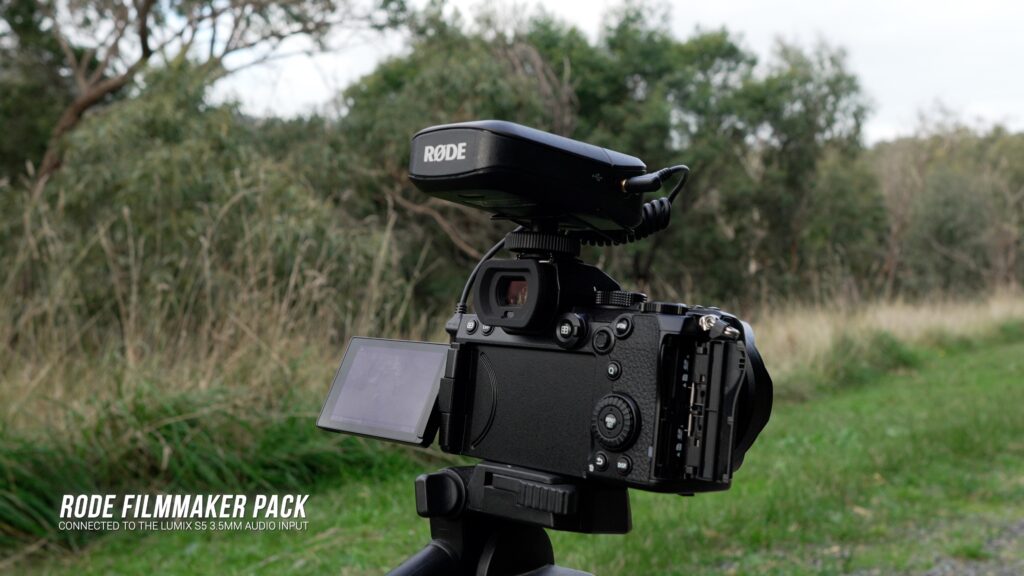
Best SD Card for Panasonic LUMIX S5
Choosing a high-quality SD card that can keep up with the Lumix S5’s fast data transfer rates is important. Panasonic recommends using SD cards with a minimum Class 10/UHS-I rating for a 4K video recording. Still, it’s recommended to use UHS-II SD cards with a V90 rating for optimal performance. The S5 can record even on an older V30 SD card, but the file transfer is much slower. For the fastest workflow, see my recommendation for the best SD card for the Lumix S5 on B&H.
Battery Life
The Panasonic Lumix S5 uses a DMW-BLK22 rechargeable lithium-ion battery pack. The battery has a capacity of 2200mAh and is rated for approximately 440 shots per charge using the rear monitor or 470 shots per charge using the LVF (Live View Finder) under CIPA (Camera & Imaging Products Association) testing standards.
However, battery life will depend on various factors, including shooting conditions, features like image stabilization and continuous autofocus, and whether you are using the rear monitor or LVF. For example, shooting in cold temperatures or using features that consume more power can reduce battery life.
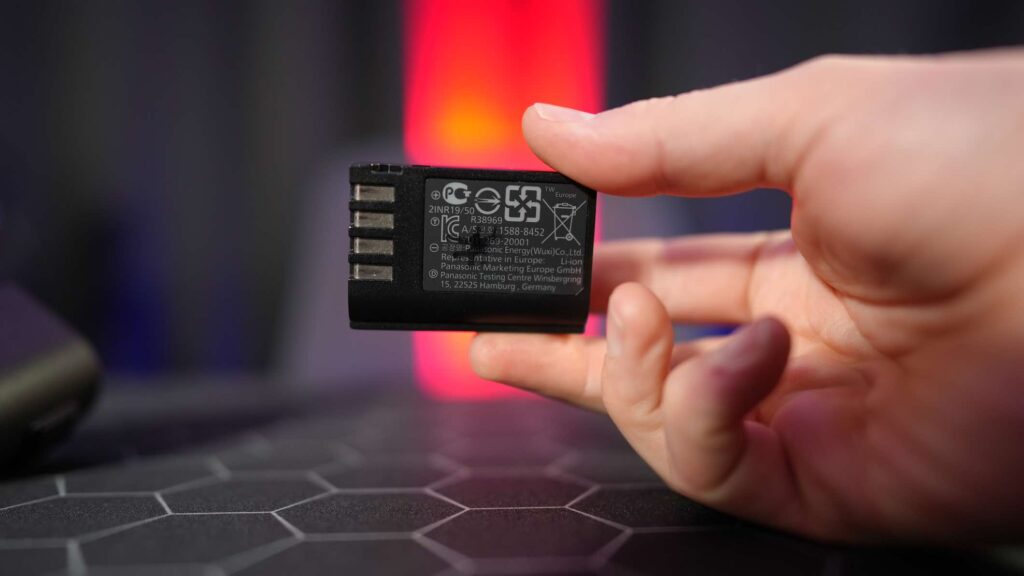
It’s worth noting that the Lumix S5 also supports USB power delivery, which allows you to power the camera using an external power bank or AC adapter. This can be especially useful for extended shooting sessions or time-lapse photography. This will not charge when the camera is on, but it will charge when it is off.
The Lumix S5 can be charged using the USB Type-C cable and an external USB charger or computer. Charging time will vary depending on the power source and battery level, but the camera supports fast charging via USB PD and can be charged up to 80% in approximately one hour.
Overall, the Lumix S5’s battery life is decent for a mirrorless camera. Still, it may not be sufficient for extended shooting sessions or heavy use of power-hungry features. However, the optional battery grip and USB power delivery support offer convenient options for extending your shooting time.
Conclusion
The Panasonic Lumix S5 is a highly capable full-frame mirrorless camera with excellent image quality and powerful video capabilities. Its compact and lightweight design makes it an ideal choice for travel and documentary photography, while its advanced features and customizable settings make it a versatile tool for creative professionals. Even with the release of the S5II, the S5 is still very capable in 2023.
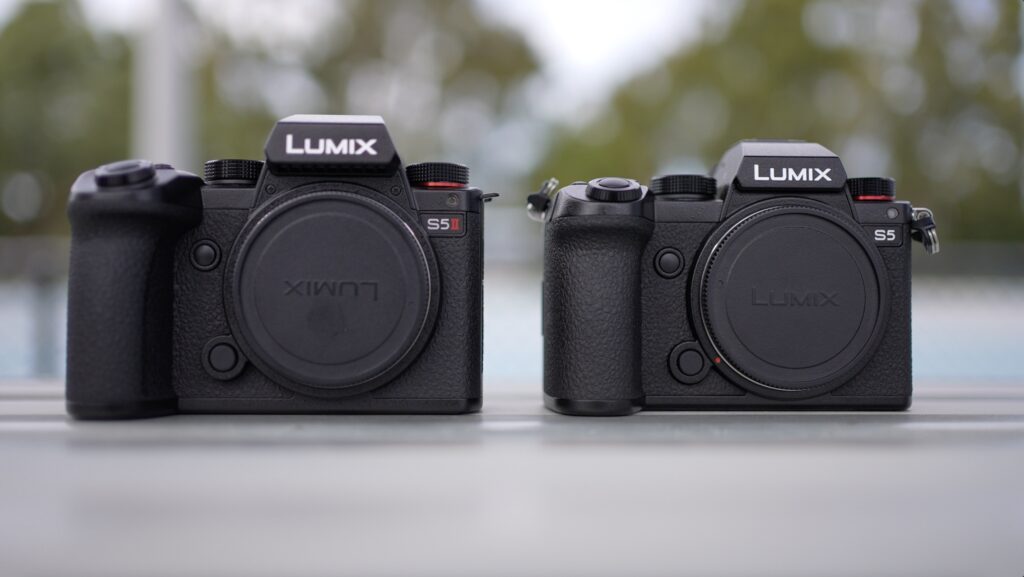
LUMIX S5 Best Price – B&H – – Amazon De – Amazon Au – Amazon Uk – Amazon Ca
Specifications for the Panasonic Lumix S5
Sensor:
24.2-megapixel full-frame CMOS sensor
Image Processor:
– Venus Engine
ISO Range:
– 100-51,200 (expandable to 50-204,800)
Image Stabilization:
– 5-axis in-body image stabilization
Autofocus:
– 225 contrast-detection points
– Face/Eye Detection AF
Continuous Shooting:
– Up to 7fps (AF-S), up to 5fps (AF-C)
Video:
– 4K UHD at 60fps
– Full HD at 180fps
– V-Log and V-Gamut profiles
– Timecode, Waveform Monitor, and Vector Scope displays
Viewfinder:
– OLED electronic viewfinder with 2.36 million dots
LCD Screen:
– 3-inch fully articulating LCD screen with 1.84 million dots
Connectivity:
– Wi-Fi and Bluetooth
– USB-C port with USB Power Delivery
Battery Life:
– Up to 440 shots per charge (using the LCD screen)
– Up to 470 shots per charge (using the viewfinder)
Dimensions:
– 132.6 x 97.1 x 81.9mm
Weight:
– Approximately 714g (including battery and memory card)
The Lumix S5 also features dual SD card slots, weather-sealing, and a range of customizable settings and controls for photographers and videographers.
Here are the detailed specifications for the Panasonic Lumix S5:
Sensor:
– 24.2-megapixel full-frame CMOS sensor
Image Processor:
– Venus Engine
ISO Range:
– 100-51,200 (expandable to 50-204,800)
Image Stabilization:
– 5-axis in-body image stabilization
Autofocus:
– 225 contrast-detection points
– Face/Eye Detection AF
– Animal Detection AF
Continuous Shooting:
– Up to 7fps (AF-S), up to 5fps (AF-C)
Video:
– 4K UHD at 60fps (10-bit 4:2:2 internal recording)
– Full HD at 180fps
– V-Log and V-Gamut profiles
– Timecode, Waveform Monitor, and Vector Scope displays
– Dual Native ISO
Viewfinder:
– OLED electronic viewfinder with 2.36 million dots
– 0.74x magnification
LCD Screen:
– 3-inch fully articulating LCD screen with 1.84 million dots
Connectivity:
– Wi-Fi and Bluetooth
– USB-C port with USB Power Delivery
– HDMI Type A port
Battery Life:
– Up to 440 shots per charge (using the LCD screen)
– Up to 470 shots per charge (using the viewfinder)
– USB power supply capable
Dimensions:
– 132.6 x 97.1 x 81.9mm
Weight:
– Approximately 714g (including battery and memory card)
Other Features:
– Dual SD card slots (UHS-II compatible)
– Weather-sealed magnesium alloy body
– 14-bit RAW capture
– High-Resolution mode (96-megapixel JPEG or 187-megapixel RAW images)
– 5GHz Wi-Fi connectivity
– Headphone and microphone jacks
– Customizable controls and settings

